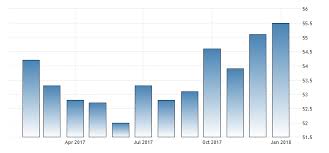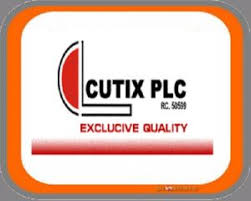PMI January headline reading declines to 54.6

The no 58 of FBN Quest research manufacturing Purchasing Managers’ Index (PMI) for Nigeria, which takes the temperature of the sector released February 01, 2018 showed a decline to 54.6 per cent, from 68.7 per cent posted in the preceding month of December 2017.
According to the report, the headline in January has posted a monthly fall every year since its launch. Even as the index owners cautioned one month ago that such a fall was expected.
The headline reading declined significantly from 68.7 to 54.6 in January. The decline was attributed to a short-lived boost in seasonal demand even as there was no trickledown effect into January.
PMIs are forward-looking indicators of sentiment in all economies, and have the proven capacity to move financial markets in developed economies.
To reinforce the point, the latest national accounts cover the third quarter (July-September) and the latest PMI the first month of the first quarter of the New Year.
The index history has shown that ,typically, January through to March have come to be associated with relatively slow months with regards to availability of funds which usually lead to subdued consumer confidence.
Subsequently, during the period, the reading for new orders slumped and the same trend reflected in the output sub-index.
The traditional seasonal pick-up in household demand has come and gone. As a result of the CBN’s exchange-rate reforms, manufacturers have enjoyed much-improved access to fx since mid-2017. It is just that there has not been a matching and enduring improvement in consumption demand.
The report pointed that MPI headline reading has been above 50 since March and was driven mainly by the CBN’s use of multiple foreign exchange windows, which has enhanced availability of funds.
Through the CBN fx window, manufacturers, or indeed any users of fx, now have reliable access to foreign exchange, so far they are comfortable with the prevailing exchange rate.
The good impact of the fx window has manifested in the good results recorded by listed companies, in the PMIs and also inflation data.
Manufacturing achieved growth of 2.6% q/q in Q3 2017. Food, beverages and tobacco, its largest segment, grew by 0.6% q/q. Meanwhile, textiles, apparel and footwear achieved close to 8% growth q/q.
Investment in backward integration, support for cotton growers from state governments and fx availability for machinery could all have played a part.
Manufacturing expanded by 2.6% q/q in Q3 2017. The two largest sub-sectors are food, beverages and tobacco, and textiles, apparel and footwear, which posted growth of 0.6% and 7.5%, respectively.
Stories: Bonny Amadi







